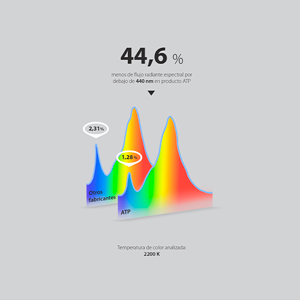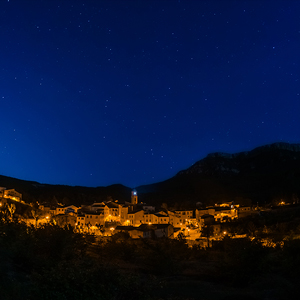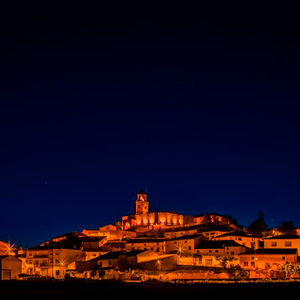The first article of Campus ATP addresses one of the major challenges of responsible outdoor lighting: how to reduce the environmental impact of artificial light without compromising safety and efficiency
ARRE —25/4/2025— ATP Lighting inaugurates Campus ATP with a key topic for the future of outdoor lighting: light pollution. Beyond the aesthetic and cultural loss of a starry sky, this phenomenon has direct consequences for biodiversity, human health, and the energy consumption of our cities.
Light pollution occurs when artificial light, instead of being concentrated on the areas it is intended to illuminate, scatters and diffuses into the night sky. This dispersion can be caused by several factors: excessive power in luminaires, the reflection of light from surfaces like the ground, or the use of light sources with a high content of short-wavelength (blue) light.
Poor planning of lighting projects can amplify all these effects, generating the characteristic nightglow visible from kilometers away from any urban center.
Technical causes and ways to control it
One of the main contributors to light pollution is excessive power: oversized luminaires that emit more light than necessary, creating spillover into unwanted areas and wasting energy.
Another important factor is skyglow caused by reflection. When light strikes the ground directly, a portion is reflected back into the atmosphere, intensifying pollution even when luminaires are properly oriented.
Additionally, the design of the luminaire itself plays a crucial role. Although LED technology allows for highly efficient light direction, poorly designed or improperly oriented luminaires can emit a considerable amount of upward flux (FHS), thereby deteriorating the quality of the night sky. Strict control of this parameter is essential in projects aiming to protect astronomical environments.
Correlated color temperature (CCT) is another critical element. Light sources with higher CCTs—above 3000 K—contain a greater proportion of blue wavelengths, which scatter more easily in the air. Conversely, ultrawarm color temperatures—below 2700 K—significantly reduce this scattering.
However, color temperature alone is not enough: two luminaires with the same CCT rating can have very different spectral radiance profiles. Consulting the radiance spectrum—especially wavelengths below 500 nm—is essential for truly responsible lighting design.
Effective technical solutions
Controlling light pollution is not just about reducing lumen output. It requires precise lighting design tailored to each environment.
The combination of custom optics, directing light exactly where it is needed, together with optimized light levels, minimizes upward flux. Selecting ultrawarm LEDs with low blue spectral content and implementing intelligent control systems further enhances this strategy, adapting illumination to actual usage needs throughout the night.
Beyond the technical: the value of the night sky
The cultural dimension of light pollution is equally critical: losing the starry sky means losing a part of our shared heritage. Initiatives like the Starlight Certification have highlighted the importance of protecting this resource, promoting sustainable astro-tourism and fostering responsible lighting projects.
Municipalities such as Jarque de la Val, Siurana, Colldejou y Torre de Fontaubella have demonstrated that it is possible to combine safety, efficiency, and environmental protection through specific measures like using ultrawarm color temperatures and optics designed to minimize upward light.
Similarly, the interventions carried out by ATP in Valle de Tena —including towns like Panticosa, Sallent de Gállego, and Escarrilla—were executed according to strict Starlight criteria, ensuring high-quality night skies without compromising residents' comfort and safety.
A particularly noteworthy achievement was the renovation of the outdoor lighting system in Villanúa, where the project developed by ATP not only improved energy efficiency and significantly reduced light pollution but was also internationally recognized with a LIT Design Award, one of the most prestigious honors in the lighting sector.
These examples reaffirm ATP Lighting’s commitment to technical design adapted to sensitive environments, proving that, with rigor and a vision for sustainability, it is possible to illuminate cities while preserving one of humanity’s most valuable heritages: the night sky.
A long-term vision for responsible lighting
Good lighting is not just about the amount of light, but about quality, direction, and long-term awareness. At Campus ATP, we will continue to explore key concepts to help build cities that are more livable, sustainable, and respectful of our natural environment.
Press contact:
Julio Aparicio
ATP Lighting
comunicacion@atpiluminacion.com
Copyright © 2016 ATP Lighting Inc. All rights reserved. ATP Lighting, the ATP Lighting logo and all trade names listed on this website with the ® symbol are registered trademarks of ATP Lighting.











![[...]](https://www.atpiluminacion.com/xtra/imgs/loading.gif)